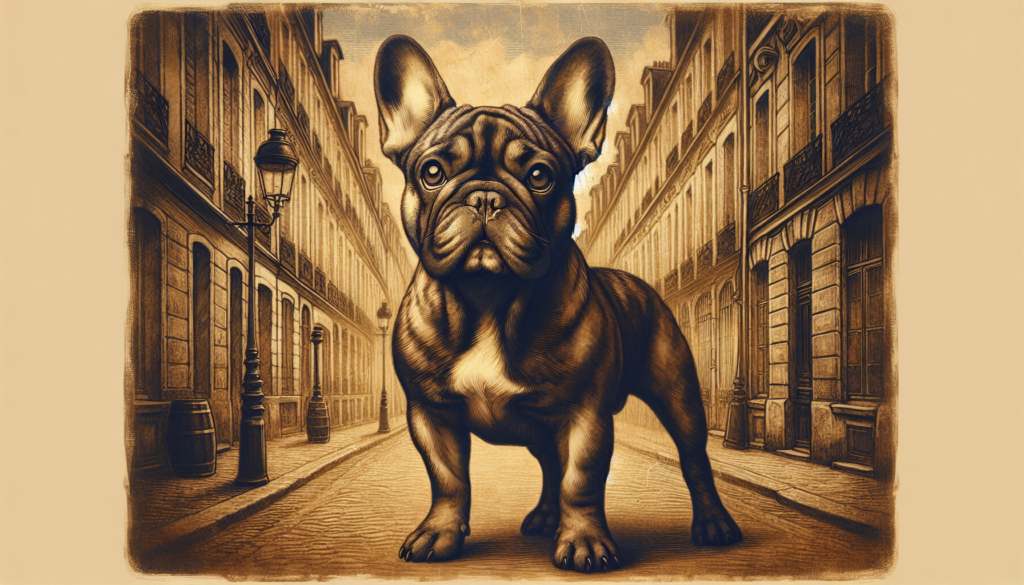
French Bulldogs are a small, adorable breed of dog that are becoming increasingly popular. But what did French Bulldogs used to look like? Before the development of the breed as we know it today, the answer is not exactly clear. French Bulldogs were bred over the course of hundreds of years to meet the aesthetic and functional requirements of their owners. As a result, their appearance has changed significantly, giving us the beloved breed we know today.
<h2>Pre-1850 French Bulldogs</h2>
The earliest origin of French Bulldogs can be traced back to the late 1850s. Before then, they were known as “toy bulldogs” or “bouledogues francais”. These early French Bulldogs had a much taller, more athletic build than today’s breed. They had a tall, rectangular head, long, narrow muzzle, high-set ears and a wide chest with a deep rib cage. They also had lop-sided ears, an attribute that was considered desirable in the breed prior to the late 1800s.
<h2>1850s to Early 1900s French Bulldogs</h2>
In the late 1800s, French Bulldogs began to undergo a variety of changes. This was largely due to the exposure of the breed to the general public during this period. French Bulldogs began to be shown in dog shows, and the desire for a very specific type of features in the breed became apparent. Breeders began selecting for a shorter and stockier body type, as well as a broader head. Other features such as larger eyes, bigger and rounder ears, and a less-pronounced muzzle also became commonplace in the breed. Consequently, the French Bulldog of today is smaller, stubbier, and cuter than their predecessors.
<h2>Modern French Bulldogs</h2>
Today, French Bulldogs are considered a smaller breed, with a short and compact body and an endearing personality. The breed has become highly sought-after for its unique and lovable look. They typically measure up to 12 inches at the shoulder with a weight up to 28 pounds. They usually have a deep-set, dark eyes that are far apart and bulging and a broad and square head with a wide and flat skull. They have well-developed cheeks, and their tails are usually curled. The breed also has broad and well-sprung ribs, and their wrinkled skin hangs off their bodies in a relaxed fashion.
Over the centuries, the French Bulldog has undergone quite a transformation. From its background as a large, athletic dog to its current status as one of the most adorable dog breeds, their evolution can be seen through the changes in their features, size, and attitude. While modern French Bulldogs may look completely different from their predecessors, these changes were necessary for the breed to become the beloved companion animal it is today.
CONCLUSION
The development of French Bulldogs over the course of hundreds of years has resulted in a unique and lovable breed. Their evolution has been quite remarkable, as they have gone from being athletic, tall dogs to being small, cute companions. While the changes in the breed’s appearance may be remarkable, the French Bulldog ultimately remains the same great and beloved companion animal it has been since its creation.
Related Info And Products:
- When Did French Bulldogs Originate?
- Where Did French Bulldogs Originate?
- How Did French Bulldogs Originate?
- What To Know About French Bulldogs?
- How Long To French Bulldogs Live?
- What Were French Bulldogs Bred To Do?
- How Long Have French Bulldogs Been Around?
- When Were French Bulldogs Created?
- How To Clean A French Bulldogs Ears?
- What Are French Bulldogs Bred For?
- Where To Sell French Bulldogs?
- How Old Do French Bulldogs Have To Be To Breed?
- How Big To French Bulldogs Get?
- Do French Bulldogs Like To Swim?
- How To Keep French Bulldogs From Smelling?